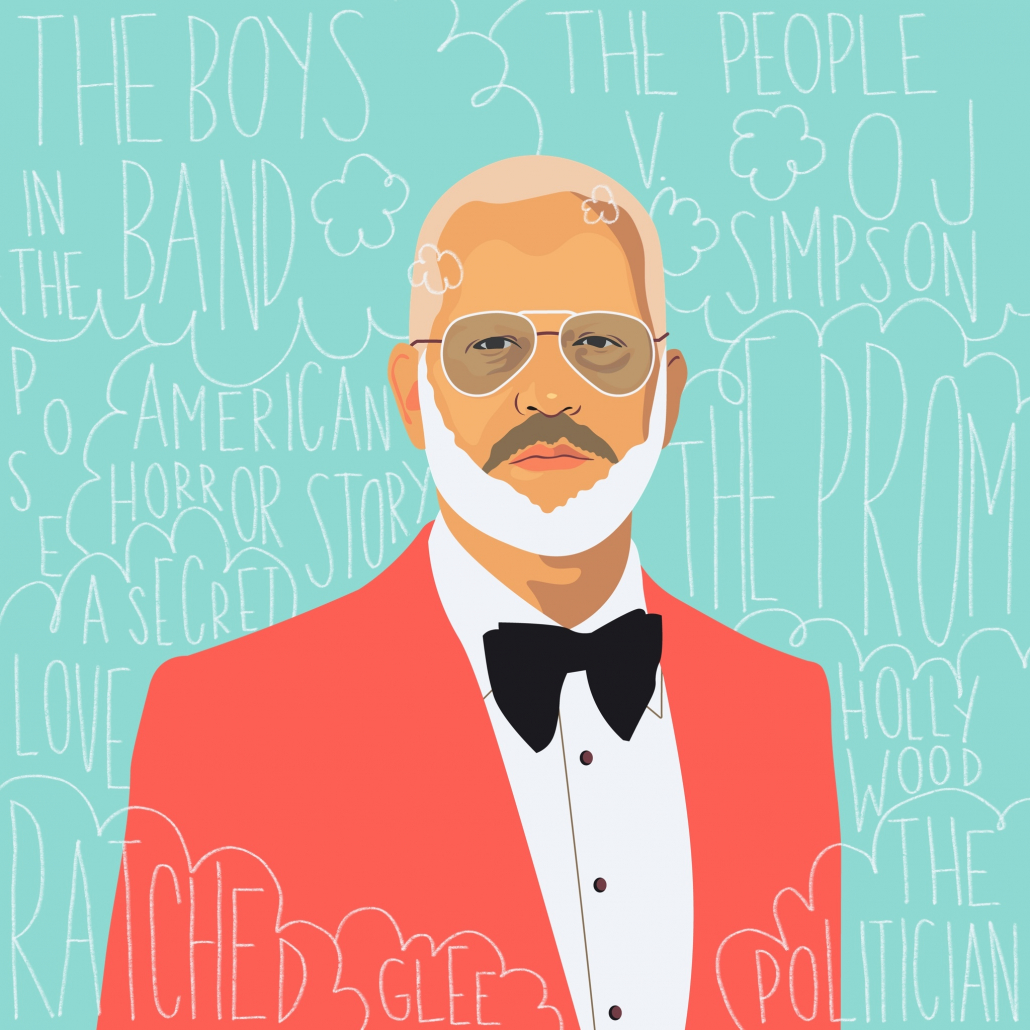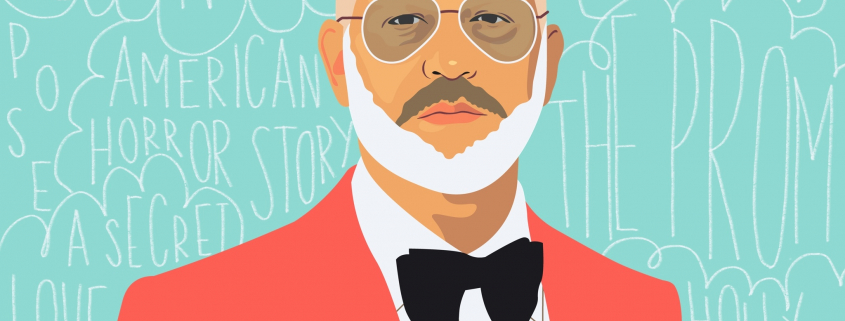Film Schooled: What the hell is Ryan Murphy doing

After weeks of tumult related to school, well-being and life in general, I decided to embark on a journey, one that could turn my brain off in the absence of a complete lobotomy.
Always interested in the best and most healthy solutions, I turned back to my computer screen and browsed Netflix for a bit of quick viewing. ’Tis the season, so the algorithm blessed my home page with recommendations of thrillers, horror flicks and super bloody slashers. Among the Top 10 most viewed list is “Ratched,” a TV adaptation focused on the sociopathic namesake in “One Flew Over the Cuckoo’s Nest,” created by the minds of Evan Romansky and none other than Mr. Ryan Murphy.
All roads lead to Ryan. Even the jade, off-putting poster for “Ratched,” featuring its main star Sarah Paulson, fired the neurons in my brain to alert me to one of the minds behind the operation, and by consequence, its quality.
Now Murphy is not short of critical accolades, winning Emmy awards for “American Crime Story,” “The Normal Heart,” “Glee” and more than 70 other nominations in other venues. He is incredibly prolific, with credits in directing, writing and producing in the 20, 30 and 40 range, respectively. Murphy is omnipresent — he sees you when you’re sleeping and knows when you’re awake — and chances are, you’re going to watch one of his shows.
Does the quality over quantity rule apply here? Or can he balance quality with his output? How can Murphy create a masterpiece like “Pose,” a cultural touchstone like “Glee” (no further questions on that one) and also create … “The Politician?”
I think these are more personal questions than what really needs to be addressed in terms of Murphy and the potential of his reach.
After making a name for himself by adapting the feature film of “Eat Pray Love,” hitting his stride with “Nip/Tuck” and moving on to other cable home runs with Fox and FX, Murphy followed in the footsteps of other major creators like Shonda Rhimes and collaborator Janet Mock to strike a deal within the streaming world. Finally leaving Fox in 2018, Murphy signed an agreement — rumored to be valued at a record-breaking $300 million — which, to this day, is “the most lucrative TV pact in history,” according to Time.
For context, deals like these, though unwelcome at the start and still scrutinized by some of the old fogies still around, kill two birds with one stone. Industry creatives who have the talent AND the audience behind their projects to transfer over to a streaming platform can use this money and freedom to pretty much hit the boundaries of their film and TV imaginations. Companies such as Netflix, which in 2019 reported –$3.27 billion in free cash flow and $14.76 in long-term debt, can tell their stockholders to refer to their staggering $24.5 billion net value in content assets and say, “We are investing in these creators to deliver the original content that sets us apart from the other guys.”
For the individual side, this is a great opportunity to take advantage of these resources, especially for a guy like Murphy who can have around 15 projects that he’s working on at any given time.
But let’s go back to my first reaction in seeing the poster for “Ratched” and predicting he was behind the show in some form. You can do this exercise with me — name five actors that work regularly on Murphy’s shows (not your favorites) and once you have them, we can compare. I thought of course of Sarah Paulson, but also Emma Roberts (because her “Scream Queens” line “Learn to make a pumpkin spice latte, you psychopath” is one of my intrusive holiday thoughts), Jessica Lange, Gwenyth Paltrow and Evan Peters. There’s the pattern.
Whatever the circumstances may be, Murphy is prone to cast white celebrities and feature white narratives, and no — him or some of his actors identifying as gay is not a placebo to the extensive whiteness in his creations. This is especially glaring when, not only the most talked about, but some of the most cherished characters in the Murphy universe are played by Black and Indigenous actors and actors of color such as MJ Rodriguez, Naya Rivera and Darren Criss.
So no, I don’t really need another snippy historical drama that speaks to feuds between the great Hollywood divas of the past. I don’t need to revisit 2012-era Tumblr to see posts upon posts of girls way too young to be watching “American Horror Story” wishing for a *trigger warning* school-shooter boyfriend *end trigger warning* to smoke half a cigarette with them for the rest of eternity. And I certainly don’t need another cop-adjacent drama, or whatever his upcoming miniseries on Jeffrey Dahmer is going to end up like.
Murphy has an incredible chance and such immense creative leverage — and probably one of the few of this generation to receive it — to, for the most part, just appeal to the white, male, gay millenial audience that clap with their glass of white wine in their hand whenever they hear Sharon Stone deliver a snappy one-liner or those who “live” for Ben Platt’s turtleneck-blazer combo. While Murphy fits within that same identity, he has the opportunity — but for me, it is a responsibility — to amplify voices and stories other than the ones that he has trudged along in his journey.
Do I have high hopes for him to achieve this? Not really. As Twitter user @The_SummerMan said, it seems like for story development, “He just be clicking around Wikipedia having a ball.” And with eight of his shows kicking off their shooting schedules this month and the next, what we will likely end up with is more pieces of media that we can throw on top of the growing and inaccessible mountain of content that we increasingly have no use for.
Lauren Mattice is a senior writing about film culture. She is also the digital managing editor at the Daily Trojan. Her column, “Film Schooled,” runs every other Wednesday.

